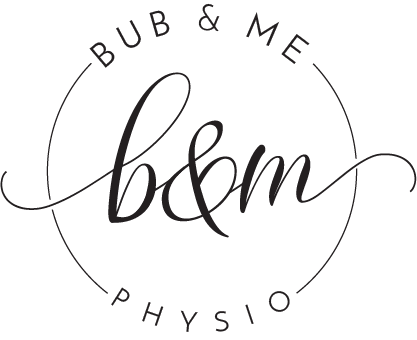Abdominal Muscle Separation
Our abdominals are made up of several muscles, which join down the middle with a strong fibrous sheath called the linea alba. During pregnancy, due to the presence of pregnancy hormones and your growing baby, the linea alba becomes thinner and stretches. It is common (and normal) for a separation to form between the right and left sides of your rectus abdominis (six pack muscle). This is known as rectus abdominis diastasis (RAD) or diastasis of the rectus abdominis muscle (DRAM).
Separation can occur any time during the second half of pregnancy. The separation becomes problematic after birth when the abdominal muscle underneath is weak and there is no longer a baby inside your abdominal cavity to give support to your stretched muscles. The separation tends to be greatest just above and below the navel.
Almost all new mothers have this separation in the first few days after birth. Some resolve quickly, but many are still present at six weeks after birth. RAD reduces the integrity and functional strength of the abdominal wall. Women who continue to have a separation tend to have less core strength, leaving them vulnerable to poor posture, pelvic instability, back pain and injury.
A separation of two finger widths (2cm) or more is considered significant. If this applies to you, then recovery of the separation and spinal stabilisation must be your primary focus. It is very important that you work to improve the strength and stability of the abdominal wall postnatally.
Your physiotherapist may give you modified exercises during the classes and advice on how to improve this separation and your abdominal wall in a safe way.
Participating in our Strong Mama Programs will help you stay strong and injury free during this transforming time. You get access to weekly education videos and weekly exercise classes that will guide you through your pregnancy and back to strength postnatally.
How can I prevent or reduce RAD?
What you do during pregnancy can affect the degree of your separation postnatally. A larger separation and a weaker abdominal wall means a longer recovery. The following are the most important factors that affect RAD, and we recommend following these guidelines during pregnancy as well as postnatally.
Maintain good posture. Having ‘sway back’ posture (especially during your pregnancy) pushes the tummy and hips forward, increasing pressure on the abdominal muscles. Try to stand and walk tall. Imagine a string attached to the top of your head pulling upwards, gently lengthening your spine. When possible, keep your shoulders back, gently pull your tummy in, and tuck your bottom under.
Strengthen your deep abdominals (transverse abdominis) and pelvic floor muscles. Having strong deep abdominal and pelvic floor muscles helps support the outer abdominals during pregnancy and assists with a quicker recovery after birth.
Avoid carrying heavy things. If you must lift something heavy, ensure that you engage your pelvic floor and deep abdominals.
Avoid all kinds of sit-ups and frontal planks during the 2nd and 3rd trimester of pregnancy and during the first 6-8 weeks after having your baby. These exercises place a large amount of pressure on the abdominal and pelvic floor muscles.
Sit-ups and frontal planks can be commenced after 6-8 weeks postpartum, however it is extremely important to have an individual postnatal check-up at 6 weeks with your women’s health physiotherapist who will be able to individually assess you and give you specific advice. Not all women should start these exercises at 6-8 weeks postpartum, it will depend on many factors including your pregnancy, type of birth, weight of baby, size of separation, strength and stability of the abdominal wall to name a few. A good indication of when to start these exercises are if you can maintain core control throughout the exercise and the separation does not bulge or increase.
If your separation is more than two finger widths wide, a support garment may be recommended.
Please speak to your physiotherapist if you know you have RAD of more than 2 cm and remember to tick off your 6-week postpartum check-up with your women’s health physiotherapist regardless of whether you are experiencing symptoms or not.


